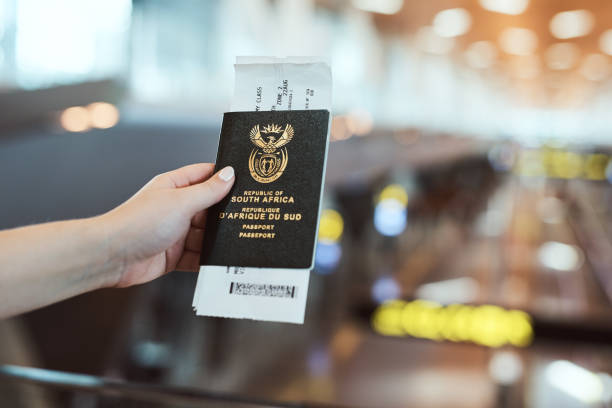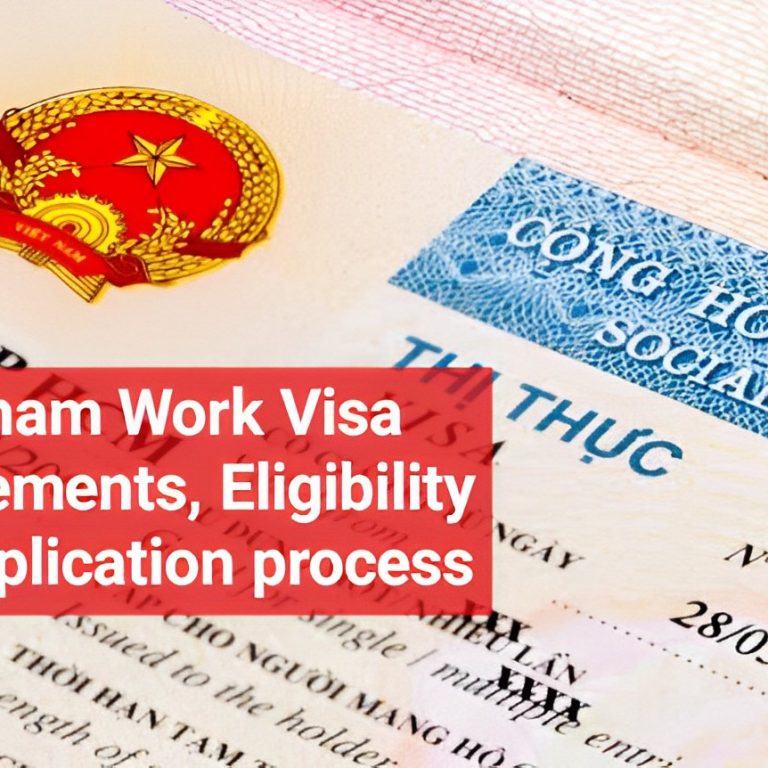How to get Visa in USA?
A visa is an official document issued by a country’s government that allows individuals to enter, stay, or transit through that country for a specific purpose and duration. For individuals planning to visit the United States, obtaining a visa is a crucial step. A U.S. visa grants permission to enter the country for various purposes, such as tourism, business, education, or employment. It serves as an authorization for foreign nationals to travel to the United States and must be obtained before departure.
Importance of a Visa for Visiting the United States
A visa is essential for visiting the United States because it ensures compliance with immigration laws and regulations. It is a way for the U.S. government to assess the eligibility, intentions, and potential risks associated with an individual’s entry into the country. By obtaining a visa, travelers demonstrate that they meet specific criteria, such as having a legitimate purpose for visiting, sufficient funds to support themselves during their stay, and strong ties to their home country that indicate they will return after their authorized visit.
The visa also serves as a security measure to protect the interests of the United States. It allows immigration authorities to screen and conduct background checks on individuals before they enter the country, helping to maintain national security and prevent unauthorized immigration or potential threats.
Overview of the Visa Application Process:
The visa application process for the United States typically involves several steps, which may vary depending on the visa category and the applicant’s country of residence. Here is a general overview:
- Determine the type of visa
- Complete the online application
- Pay the application fee
- Schedule a visa interview
- Gather supporting documents
- Attend the visa interview
- Await a decision
- Receive your visa
Determine the Type of Visa You Need
When applying for a visa to the United States, it’s important to determine the specific visa category that corresponds to the purpose of your travel. The U.S. offers various visa categories, each designed to accommodate different types of visits. Here are some of the common visa categories along with guidance on selecting the appropriate visa based on the purpose of your travel:
- B-1/B-2 Visitor Visas: The B-1 visa is for temporary business visitors, allowing individuals to engage in business-related activities such as attending conferences, negotiating contracts, or consulting with business associates. The B-2 visa is for tourism and non-business-related visits, including vacationing, visiting family or friends, or receiving medical treatment. If your visit involves both business and tourism activities, you may be eligible for a B-1/B-2 combination visa.
- F-1 Student Visa: The F-1 visa is for individuals seeking to study at an accredited educational institution in the United States. To be eligible, you must have been accepted by a U.S. institution, provide evidence of financial support, and intend to return to your home country after completing your studies.
- J-1 Exchange Visitor Visa: The J-1 visa is for participants in approved exchange programs, including students, scholars, researchers, and individuals engaged in cultural, educational, or professional exchange programs. The specific program will determine the duration and purpose of the exchange.
- H-1B Work Visa: The H-1B visa is for foreign workers employed in specialized occupations, typically requiring a bachelor’s degree or higher. It is employer-sponsored, and the employer must demonstrate that they were unable to find a qualified U.S. worker for the position.
- O-1 Extraordinary Ability Visa: The O-1 visa is for individuals with extraordinary abilities in fields such as science, arts, education, business, or athletics. This category requires substantial evidence of achievements and recognition in the field.
- L-1 Intracompany Transfer Visa: The L-1 visa is for employees of multinational companies who are being transferred to a U.S. branch, subsidiary, or affiliate. It allows individuals in managerial, executive, or specialized knowledge positions to work temporarily in the United States.
- K-1 Fiancé(e) Visa: The K-1 visa is for foreign nationals who are engaged to be married to a U.S. citizen. It allows them to enter the United States to marry their U.S. citizen fiancé(e) and then apply for adjustment of status to become a permanent resident.
Visa Requirements in USA
The United States has specific visa requirements depending on the purpose of your visit. Here is an overview of some common visa categories and their requirements:
B-1/B-2 Visitor Visa:
Purpose
Business or tourism visits, including attending meetings, conferences, tourism, medical treatment, or visiting family/friends.
Requirements
- Valid passport.
- Completed Form DS-160.
- Application fee payment.
- Proof of financial ability to cover expenses during the visit.
- Intent to return to the home country after the visit.
- Supporting documents, such as travel itinerary and invitation letters (if applicable).
F-1 Student Visa
Purpose
Pursuing academic studies at a recognized U.S. educational institution.
Requirements
- Admission acceptance from a U.S. institution.
- SEVIS (Student and Exchange Visitor Information System) fee payment.
- Valid passport.
- Completed Form DS-160.
- Proof of financial support for tuition and living expenses.
- Intent to return to the home country after completing studies.
- Additional documents as required by the institution or embassy/consulate.
J-1 Exchange Visitor Visa:
Purpose
Participating in approved exchange programs, including educational, cultural, or professional exchanges.
Requirements
- Approved sponsor organization or institution for the exchange program.
- Valid passport.
- Completed Form DS-160.
- SEVIS fee payment.
- Proof of financial support during the exchange.
- Intent to return to the home country after completing the program.
H-1B Work Visa:
Purpose
Employment in a specialized occupation in the United States.
Requirements
- Job offer from a U.S. employer.
- Labor Condition Application (LCA) approval.
- Valid passport.
- Completed Form DS-160.
- Petition approval from the U.S. Citizenship and Immigration Services (USCIS).
- Proof of qualifications and specialized skills.
- Intent to return to the home country after the employment period.
O-1 Extraordinary Ability Visa
Purpose
Individuals with extraordinary abilities in sciences, arts, education, business, or athletics.
Requirements
- Documentation of extraordinary ability and recognition in the field.
- Valid passport.
- Completed Form DS-160.
- Evidence of significant achievements and recognition.
- Employment offer or itinerary of planned activities in the U.S.
Complete the Online Visa Application
To complete the online visa application for the United States, follow these steps:
- Visit the U.S. Department of State’s Consular Electronic Application Center website: https://ceac.state.gov/genniv/
- Select the location where you will apply for the visa. Choose the country and city where the U.S. embassy or consulate is located.
- Click on “Nonimmigrant Visa” if you are applying for a temporary visa (such as a tourist visa, business visa, student visa, etc.). If you are applying for an immigrant visa (permanent residency), select “Immigrant Visa.”
- Click on “Apply” or “Start an Application” to begin the application process.
- Read and accept the terms and conditions provided on the website.
- Complete the Form DS-160 online. This form collects information about your personal details, travel plans, employment or education history, and other relevant information. Fill out each section accurately and thoroughly.
- Upload a suitable photograph as per the provided specifications. The photo should meet the required dimensions, background color, and other criteria mentioned on the website.
- Review your completed application form carefully before submitting. Make sure all the information is accurate and up-to-date.
- Pay the visa application fee. The fee amount and payment methods will be specified during the application process. Payment options typically include credit/debit cards or electronic funds transfer.
- Save or print the confirmation page containing your unique application ID. This page will have important information about your application and will be required for future reference.
- Schedule a visa interview appointment. Depending on the embassy or consulate, you may be able to schedule the interview immediately after completing the online application or at a later time. Follow the instructions provided on the website to schedule your interview.
- Attend the visa interview on the scheduled date. Bring the required documents, such as your passport, confirmation page, supporting documents, and any additional materials specified by the embassy or consulate.
It’s important to note that the process and specific requirements may vary depending on the visa category and the U.S. embassy or consulate you are applying to. It’s recommended to refer to the official website of the U.S. Department of State or the specific embassy/consulate website for detailed instructions and guidelines regarding the online visa application process.
Pros
| Pros | Details |
| Convenience | The online application allows you to complete the visa application at your own pace, from the comfort of your own home or anywhere with an internet connection. |
| Time-saving | Applying online can save time compared to paper-based applications, as you can fill out the form electronically without the need for printing or mailing documents. |
| Error prevention | The online application form often includes built-in validation checks, which can help catch errors or omissions before submission, minimizing the chances of rejection or delays. |
| Access to guidance and instructions | The online application portal typically provides detailed instructions and guidance for each section, helping you navigate the application process more easily. |
| Efficient document management | The online system allows you to upload required documents electronically, eliminating the need for physical copies and facilitating document submission. |
| Immediate confirmation and ID access | After submitting the online application, you receive a confirmation page with a unique application ID that serves as proof of application submission and allows you to access your application status later. |
| Online payment options | The online application process usually provides secure payment options, allowing you to pay the visa application fee conveniently using credit/debit cards or electronic fund transfers. |
| Appointment scheduling flexibility | In many cases, the online system allows you to schedule your visa interview appointment immediately after completing the application, giving you more control over the process. |
| Easy application retrieval and edits | With the unique application ID, you can access your application at any time, make edits if needed, or retrieve the application for reference or future use. |
| Enhanced data accuracy | Typing the information directly into the online form reduces the chances of errors or illegible handwriting that can occur with paper-based applications. |
Cons
| Cons | Details |
| Technical difficulties | Technical issues, such as internet connectivity problems or website glitches, can occur during the online application process, causing frustration and potential delays. |
| Language barriers | The online application forms are typically available in English, which may pose challenges for individuals who are not proficient in the language. Translating the application accurately may require assistance or professional help. |
| Limited guidance for specific scenarios | The online application process may not cover all possible scenarios or address specific questions or concerns that applicants may have, necessitating additional research or seeking guidance from the appropriate authorities. |
| Uploading document challenges | Uploading documents electronically may require scanning or converting physical documents into suitable file formats, which can be time-consuming or unfamiliar to some applicants. It may also require access to scanning equipment. |
| Privacy and data security concerns | Sharing personal information and documents online may raise privacy and security concerns for some applicants. It’s important to ensure that the online application system is secure and to use trusted platforms for document uploads and payments. |
| Inability to provide physical documents | Certain documents, such as original bank statements or certificates, may need to be submitted physically rather than electronically. In such cases, applicants may need to mail or submit documents in person to the relevant embassy or consulate. |
| Internet access requirements | The online application process requires a stable internet connection and access to a computer or mobile device. Applicants in areas with limited internet connectivity or those without access to suitable devices may face challenges. |
| Potential need for additional assistance | Some applicants may find the online application process complex or confusing and may require assistance from embassy or consulate staff or seek help from visa application centers or consultants. |
Conclusion
In conclusion, applying for a visa to the United States is an important step in planning your visit or stay in the country. Understanding the visa requirements and selecting the appropriate visa category based on the purpose of your travel is crucial.
The online visa application process for the United States offers several advantages, including convenience, time-saving, error prevention, and access to guidance. It allows you to complete the application at your own pace, upload required documents electronically, and make secure online payments. Additionally, the online system provides immediate confirmation and access to your application status, as well as the flexibility to schedule your visa interview appointment.
However, it’s important to be aware of potential challenges, such as technical difficulties, language barriers, and privacy concerns. The online application may not cover all scenarios, and some applicants may require additional assistance or need to provide physical documents.
To ensure a successful visa application, carefully follow the instructions, provide accurate information, and meet all the necessary requirements. It’s recommended to refer to the official website of the U.S. Department of State or the specific embassy/consulate website for detailed and up-to-date information.
Remember to start the visa application process well in advance of your planned travel dates to allow for sufficient processing time. If you have any specific concerns or questions regarding your visa application, it’s advisable to seek guidance from the appropriate authorities or consult with immigration professionals.
By understanding the visa requirements, completing the online application accurately, and adhering to the guidelines, you increase your chances of obtaining a visa to the United States and embarking on your planned visit or stay.






